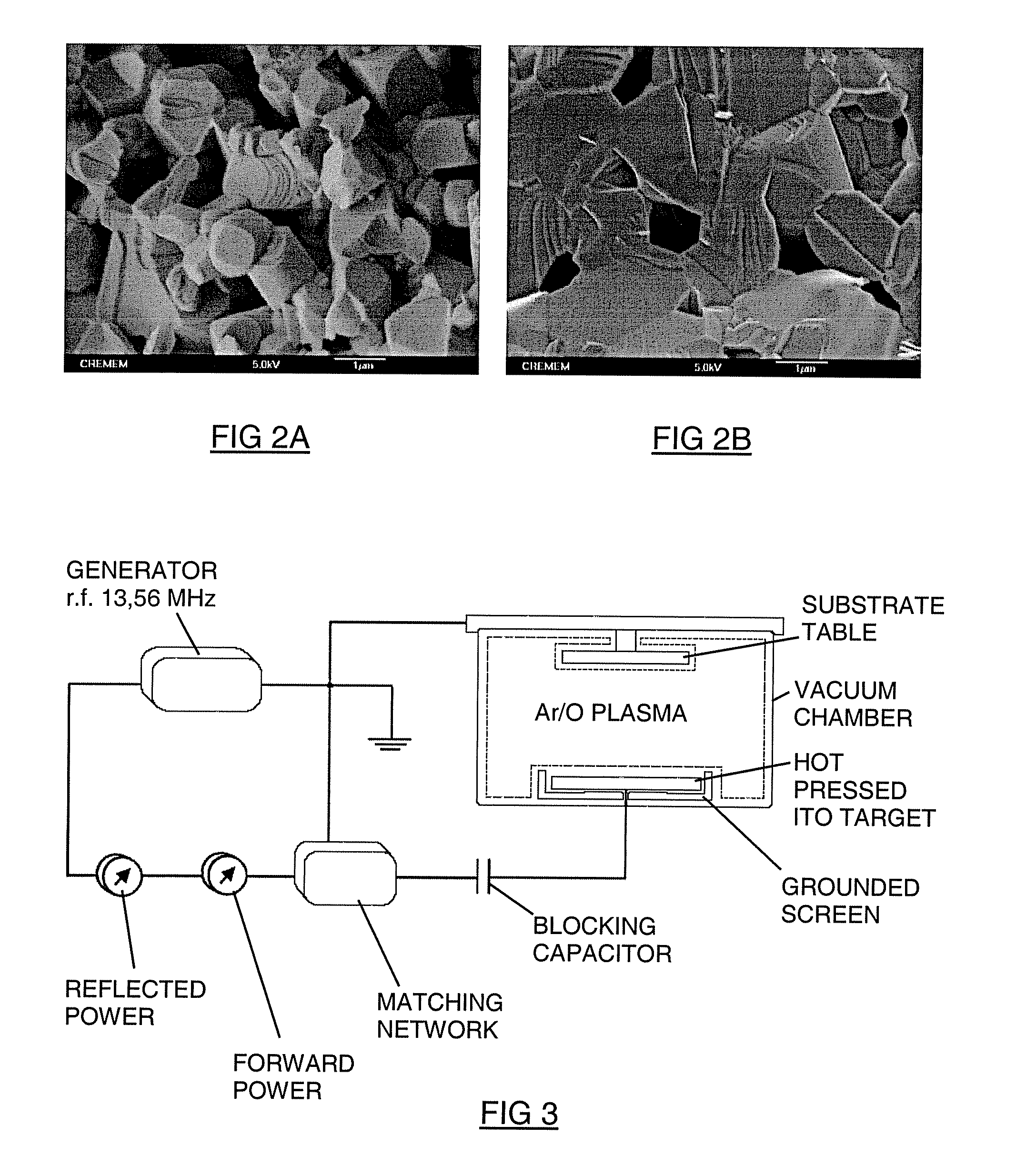Process for preparing ceramics, ceramics thus obtained and uses thereof, especially as a sputtering target
a technology of ceramics and sputtering targets, applied in the field of high-density ceramics, can solve the problems of high operating costs, difficult methods to be put into production by a simple operator, and difficult operation, and achieve the effect of improving charge mobility and electrical properties
- Summary
- Abstract
- Description
- Claims
- Application Information
AI Technical Summary
Benefits of technology
Problems solved by technology
Method used
Image
Examples
examples
[0193]The examples explained below are given by way of illustration only and should not be interpreted as constituting any limitation of the subject of the present invention.
example 0
Preparation of a Commercial-Type ITO Ceramic
[0194]In order to prepare the circular ITO target (ceramic) (FIG. 2A) having a diameter of 5 cm and of In1.9Sn0.1O3 composition and having a weight equal to 50 g, the experimental protocol detailed below was followed.
[0195]Step 1) 47.3173 g of In2O3 and 2.6827 g of SnO2 were mixed using the well-known technique of “ball-milling” with the 05.600 FRITSCH apparatus; for this purpose, the aforementioned mixture of powder was put into one of the two agate grinding bowls from FIG. 34 each containing 50 agate balls having a diameter of 8 mm; 30 ml of ethanol was added; it was covered with an agate lid as indicated in the figure; the “ball-milling” was then carried out for 3 hours at 250 rpm as indicated in the figure. The powder thus mixed in ethanol was then put into a beaker and the powder was dried by heating it at 110° C. for 8 hours in air.
[0196]Step 2) The powder was placed in a cylindrical stainless steel mold having an internal diameter o...
example 1
ITZO Targets for the Preparation of Transparent and Metallic Electrodes for Optoelectronic Devices
[0198]According to a first preferred embodiment of the invention, when the inorganic base material is the oxide In2O3 or tin-doped In2O3 (commonly known as ITO), for which indium is in the average degree of oxidation of +3, the dopant may advantageously be zinc oxide or magnesium oxide (preferable to a zinc or magnesium halide or oxyhalide, even if the latter have a certain advantage) for which the degree of oxidation of the zinc or of the magnesium is +2, that is to say lower than that of +3 of the indium.
[0199]Even when the molar ratio of the dopant relative to that of the indium oxide is as low as 0.06, sufficiently dense ceramics for being able to be used as a target or target element for sputtering are obtained by simple heating (which may be in air) at temperatures above 1100° C. (ideally 1300° C.) following the aforementioned method and when said assembly is held at this temperat...
PUM
| Property | Measurement | Unit |
|---|---|---|
| temperature | aaaaa | aaaaa |
| temperature | aaaaa | aaaaa |
| resistivity | aaaaa | aaaaa |
Abstract
Description
Claims
Application Information
 Login to View More
Login to View More - R&D
- Intellectual Property
- Life Sciences
- Materials
- Tech Scout
- Unparalleled Data Quality
- Higher Quality Content
- 60% Fewer Hallucinations
Browse by: Latest US Patents, China's latest patents, Technical Efficacy Thesaurus, Application Domain, Technology Topic, Popular Technical Reports.
© 2025 PatSnap. All rights reserved.Legal|Privacy policy|Modern Slavery Act Transparency Statement|Sitemap|About US| Contact US: help@patsnap.com



